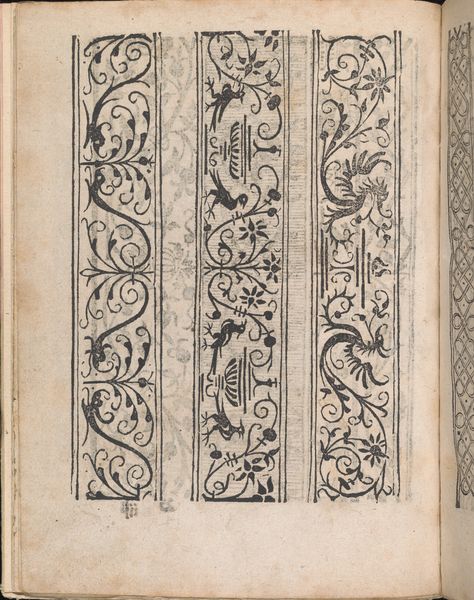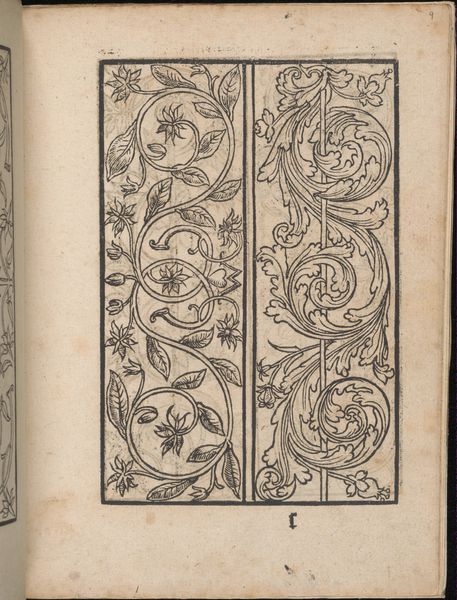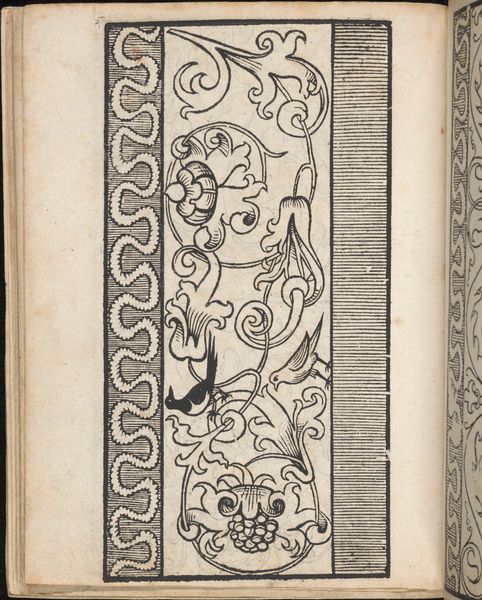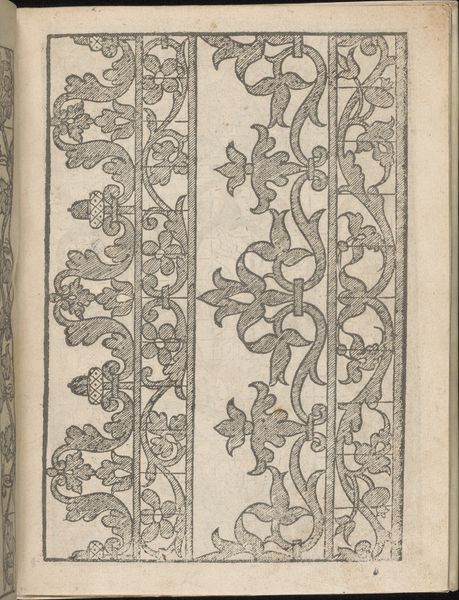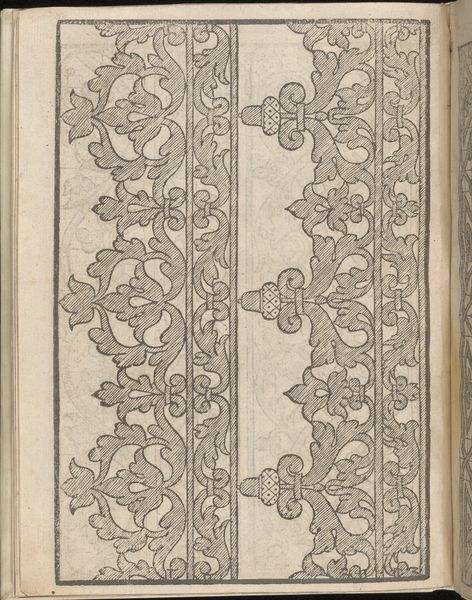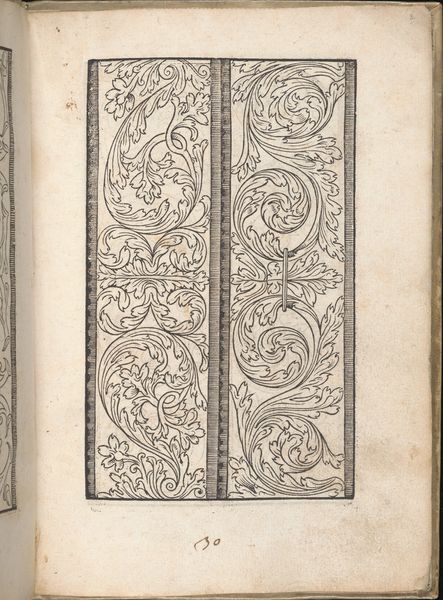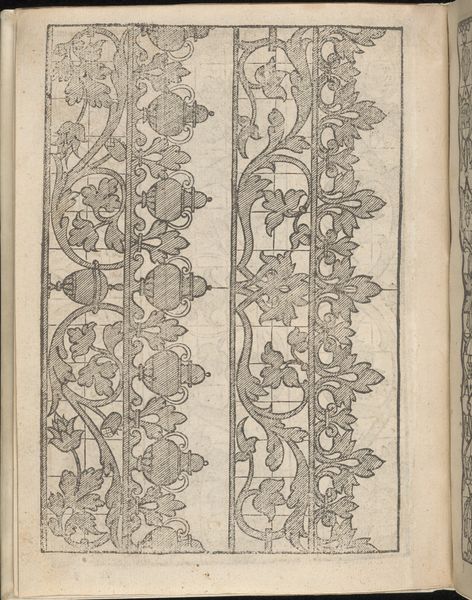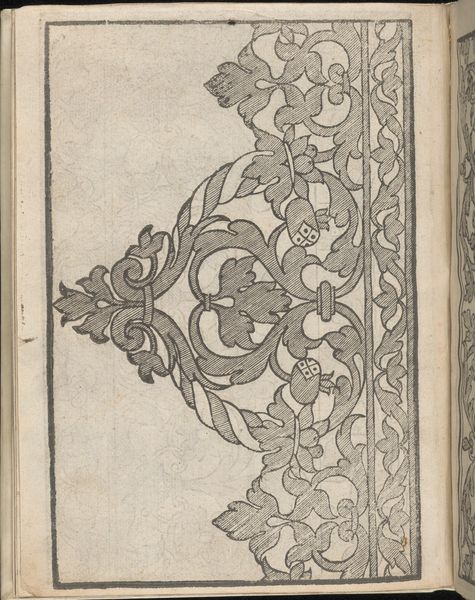
drawing, graphic-art, print, woodcut, engraving
#
drawing
#
graphic-art
#
pen drawing
# print
#
book
#
11_renaissance
#
woodcut
#
engraving
Dimensions: Overall: 7 7/8 x 5 7/8 in. (20 x 15 cm)
Copyright: Public Domain
Iseppo Foresto made this woodcut design for needlework in Venice sometime in the mid-16th century. At this time pattern books were growing in popularity, as was the demand for luxury goods such as lace. Books such as Foresto’s played a vital role in the development of the fashion and textile industries. They did this not only by disseminating design ideas, but also by allowing a wider range of people to participate in the creation and consumption of luxury items. The book's designs could be copied, disseminated and altered to fit the needs and tastes of women of varying social classes. The imagery itself is significant; the vines, fruit, and animal figures, particularly the fantastical creatures, would have been culturally recognizable symbols of wealth and status. By reproducing them in needlework, women could associate themselves with the elites who commissioned expensive tapestries and garments. Through the use of pattern books and the skills of needleworkers, fashion became a means of social expression, and even of challenging the established social order. To understand the full story of this image, one might look to sources on the history of fashion, textile production, and gender roles in early modern Europe.
Comments
No comments
Be the first to comment and join the conversation on the ultimate creative platform.


